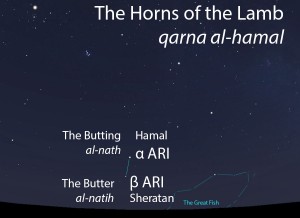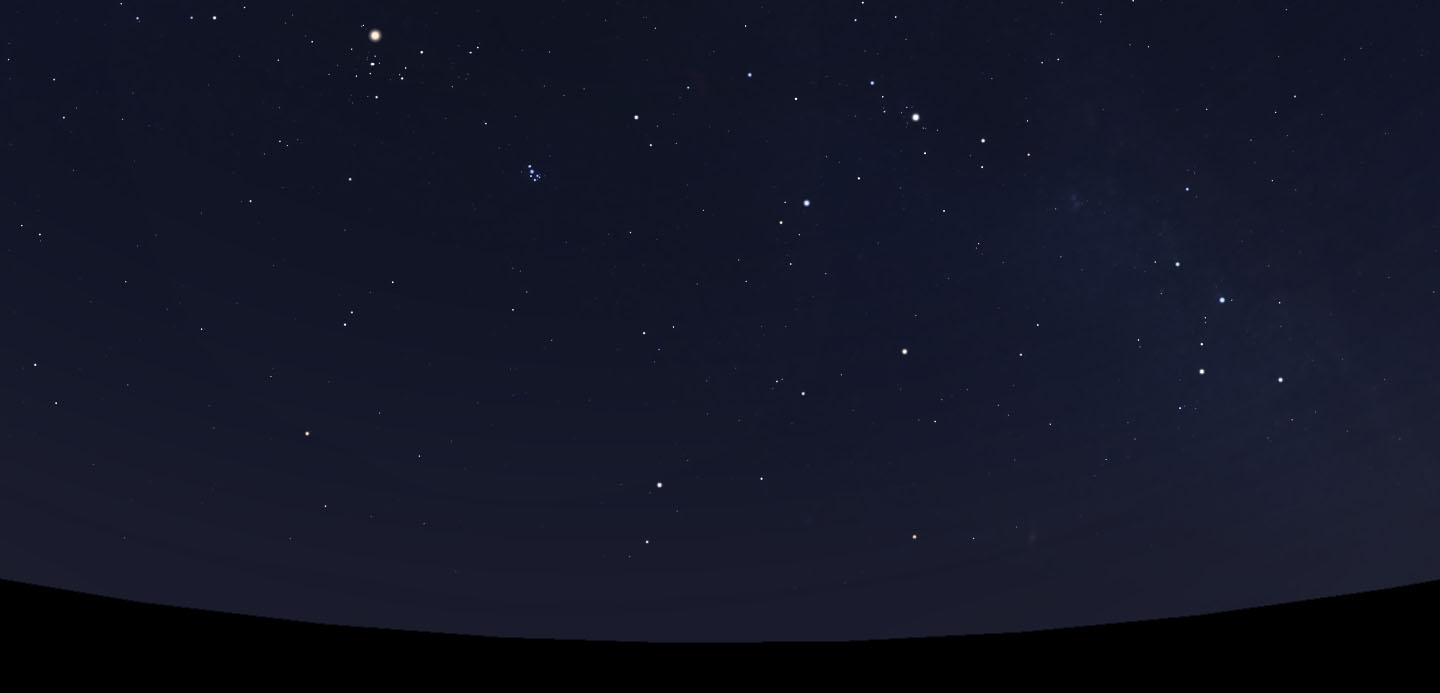Star Names
The Two Horns of the Lamb (qarna al-hamal)
The Butting and the Butter (an-nath w’an-natih)
The Arabic term hamal refers to a first-year lamb, not to a male ram like the Greeks saw in their constellation Aries. Specifically, the celestial Lamb is a lamb from among the fat-tailed sheep that were bred for their large fatty rumps and tails. The Horns of the Lamb were thus imagined as the two little nubs on the head of a first-year fat-tailed lamb, not the circular horns of a mature ram. Some Arabs also called this pair of stars the Butting (al-nath) and the Butter (al-natih).

The Horns of the Lamb (qarna al-hamal) as they appear setting in the west about 45 minutes before sunrise in mid-November. Sky simulations made with Stellarium.
Appearance
A pair of bright stars located southeast of the Great Fish, roughly between the modern-day Square of Pegasus and the Pleiades star cluster.
Modern Identification
α ARI (Hamal), yellow giant star, magnitude 2.0
β ARI, (Sheratan), white star, magnitude 2.6
Timing
The two stars of the Horns of the Lamb rise together but set about 5 days apart. They were also known as a lunar station by the name of the Two Signs (ash-sharatan). Ibn Qutayba (d. 879 CE) reported that the Two Signs was said to rise on the morning of April 16 and set on the morning of October 16. On account of the precession of the equinoxes, today we can expect to observe the Horns of the Lamb setting in early November and rising at the end of April, as seen from the latitude of Tucson. (See How to Observe on the About page for more on this topic.)
Rain Stars
In the calendars of Qushayr and Qays, the Horns of the Lamb are known as the Sign (ash-sharat), whose morning setting occurs during the autumnal rainy season called al-wasmi.
Lunar Stations
The stars that represent the Horns of the Lamb are also one of the lunar stations as the Two Signs (ash-sharatan). In early listings of the lunar stations, the Two Signs is the third station of the year. This was later changed to the first lunar station after the stations were adjusted to begin with the vernal equinox.
Related Stars and Celestial Complexes
The Horns of the Lamb are part of the Lamb (al-hamal, الحمل) folkloric celestial complex. The Horns connect to the Belly of the Lamb (batn al-hamal, بطن الحمل) and its Fatty Tail (alyat al-hamal, ألية الحمل).

